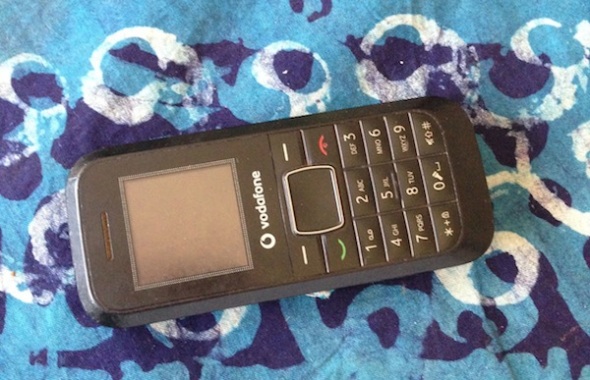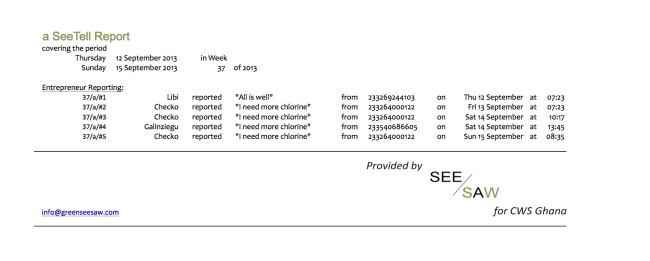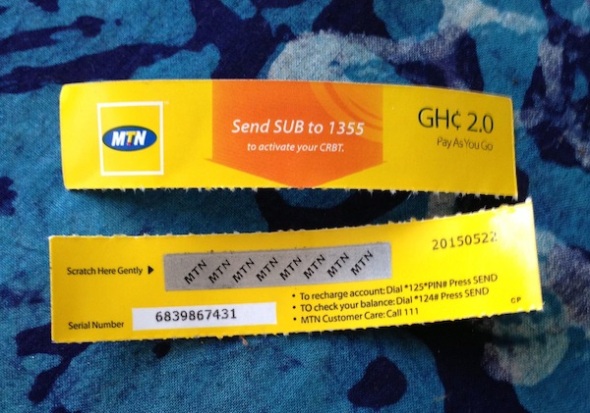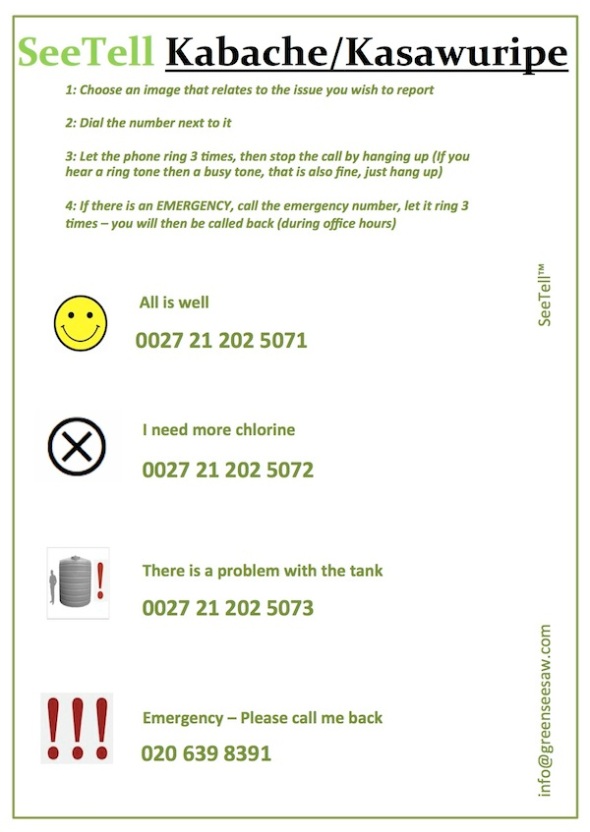
- The metal polytank stand CWS entrepreneurs are now using in a number of communities. The stand allows for the water treatment centers to be moved to different water sources.
Back in June, I wrote a blog post about metal polytank stands and how CWS was going to test them in communities that use multiple water sources. You can read that post here.
Since then, CWS has distributed metal polytank stands to 10 different communities: Gbandu, Jarayili, Kabache/Kasawuripe, Kindeng, Kpalbusi, Kpalbusi, Libi, Tacpuli, Tindan II and Tunga. These are villages that CWS targeted because of the challenges the entrepreneurs were facing in keeping their water businesses open year round. Most of the CWS water businesses are set up next to dugouts where community members already go to get their water. Center implementation next to the dugout is ideal because when women fetch water for household use, they can buy clean drinking water from the centers without disrupting their daily routines.

- Women fetch water from a typical dugout in Kadula.
But what happens when people go somewhere closer to fetch water? Well the entrepreneurs who sell water (usually) lose business. The community members living in these CWS villages are practical people with busy schedules. If the village women can save time by fetching water somewhere closer to home, they are going to make the switch and avoid the extra trek to buy clean water.
The CWS field staff observed this in a number of communities. In the transition from the dry season to the rainy season and vice versa, the level of the water sources can drastically fluctuate. In the Northern Region villages, the rains determine how much water is available. New dugouts form for short periods of time, a river can become more accessible or even hand dug wells are used to collect rainwater. With the low-tech nature of the CWS model, the women can move the location of their water businesses as long as there is water to treat.

- Children pose by a hand dug well in Kabache/Kasawuripe, where the entrepreneurs decided to move their center to treat water.
With the help of a welder, CWS created the metal polytank stand and modified the CWS model to the changing of seasons and water levels. Some of the water businesses easily adapted to the metal polytank stands. For example, in Kpanayili, Affilua, Anatu, Fati and Zilifau used their metal polytank stand to move the center to a closer dugout that only has water in the rainy season. Their sales drastically increased when they switched water sources. In Tacpuli, Lasinche moved the water business from the dugout to a smaller dugout closer to the community. Kpanayili and Tacpuli have been operating with the new stands just as the CWS field staff envisioned. And the entrepreneurs have reaped the benefits.

- The water business owners in Kpanayili from left to right: Zilifau, Affilua, Fati and Anatu.
 The smaller dugout in Tacpuli.
The smaller dugout in Tacpuli.
The entrepreneurs have lower sales during the rainy season because community members have the option to collect free, clean rainwater instead of buying water from the centers. In Libi and Kpalbusi, the rains delayed their transition to using the metal polytank stands. In Libi, the water business entrepreneur, Cheriba, banked on her community collecting rainwater in July and August because she was busy on her farm. As a result, the water business was left empty at the river where nobody goes to get water this time of year. The CWS field staff is working with her to bring the center to a closer source, so people will have the option to buy clean water when the rains stop. In Kpalbusi, Huseifa, Zilifau and Maria moved their water business from the dugout to the center of town to treat rainwater. The problem was they were not receiving enough rain to treat. Their center was empty all of July. As of the beginning of August, the entrepreneurs have moved the business to a nearby stream where they will be able to keep the center up and running until the dry season.

- An example of how water levels can change in the Northern Region. Here is a road flooded by a stream in Tamale after a heavy rain.
With the drastic change in water levels throughout the year, the CWS entrepreneurs have to alter the way they do business. This could mean treating rainwater, dealing with the change in sales from the dry season peaks to the rainy season lows, or even moving location. In the past, CWS has found that it can take a year of dealing with these challenges for the entrepreneurs to become familiar with the way their individual businesses operate. The metal polytank stands are going to be added to this equation of business operations. The entrepreneurs are going to have to ask themselves: When should we move the centers? Where are people going to fetch water? What location will bring in the highest sales? Who can I find to help us move the centers? This will take some getting used to. But the metal polytank stands should help in keeping these businesses open year round, which is the end goal after all.
-Brianán
































